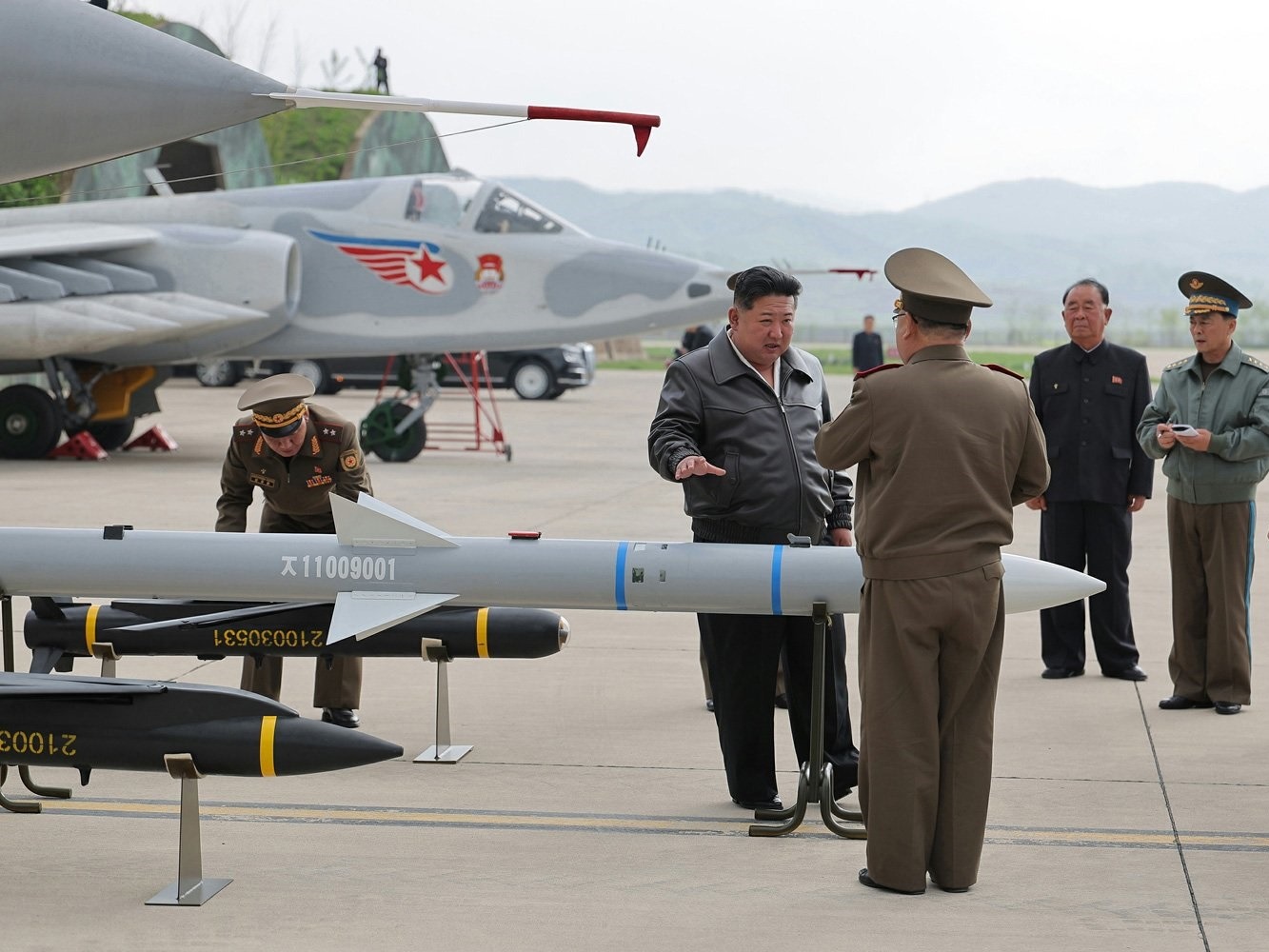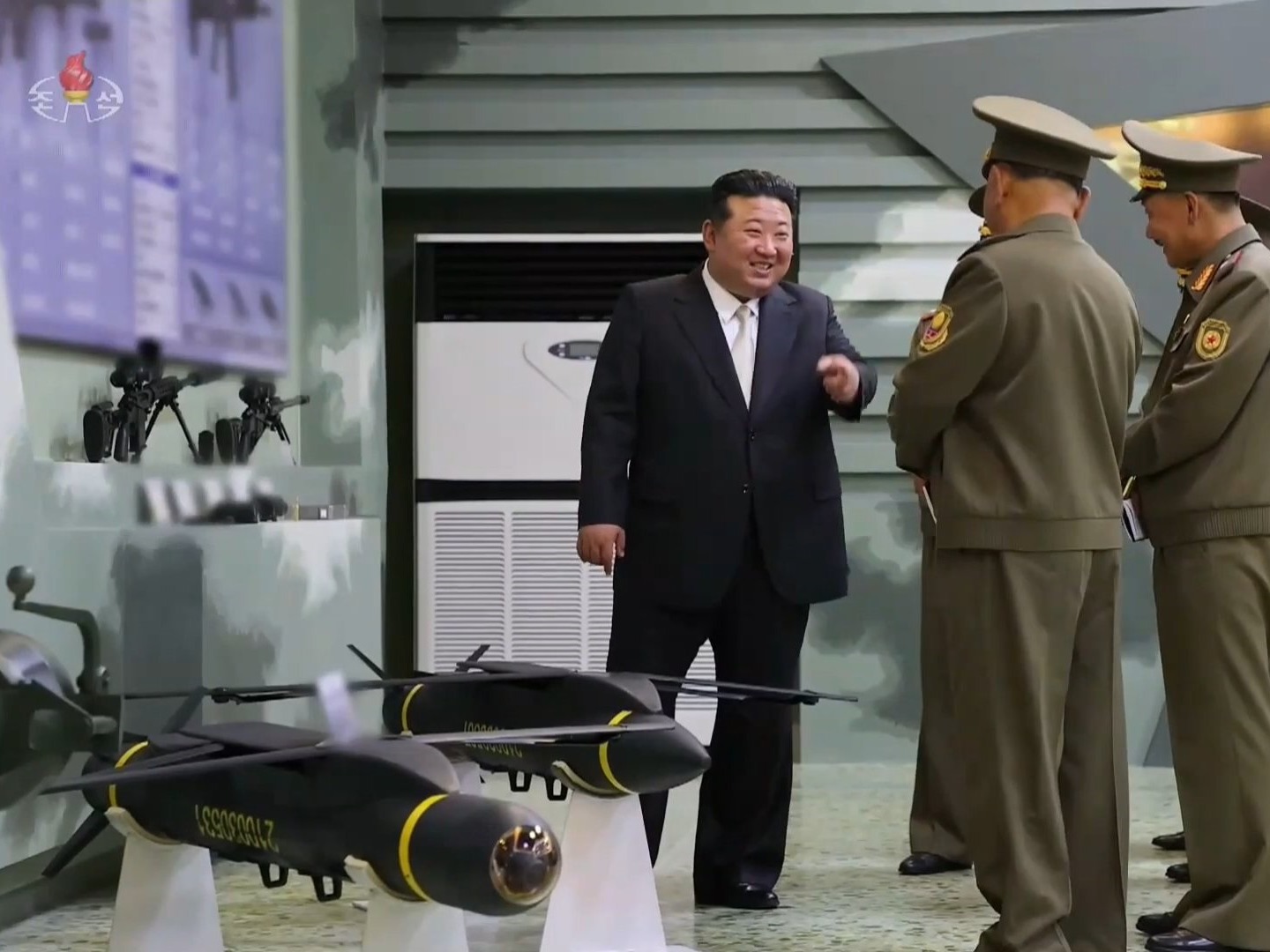North Korea: New AMRAAM-Type Air-to-Air Missile and Guided Bombs
Military exercises in North Korea reveal new BVR missile and guided bombs on MiG-29s and domestically developed drones.
Pyongyang has revealed a potential qualitative leap in its Air Force with the appearance of active-guidance BVR missiles on its MiG-29s, along with the integration of precision glide bombs across multiple platforms. These developments suggest a domestic push to achieve modern armament capabilities.
During a series of aerial exercises conducted in mid-May, North Korea appears to have demonstrated a significant advancement in its air-to-air combat capabilities by unveiling what could be identified as a medium-range active-guidance air-to-air missile, comparable in shape and size to the U.S. AIM-120 AMRAAM. While not yet officially confirmed, this new capability bears strong similarities to missiles previously showcased in military parades and would represent a major technological leap for the Korean People's Air Force (KPAF).
The observation was based on visual material released on May 16, during a joint training event involving MiG-29 and Su-25 fighters, helicopters, and Myŏngsŏng-9-type drones. The importance of such a missile lies in its ability to engage and destroy aerial threats at significant distances without the need for continuous radar lock from the launching aircraft, thanks to its own active radar seeker in the terminal phase of the attack. This would mark a dramatic improvement over the semi-active or infrared-guided missiles that make up most of North Korea’s current arsenal, potentially offering capabilities comparable to early AMRAAM versions like the AIM-120B.

The second key element of the exercise was the use of guided glide bombs (one reportedly featuring optronic terminal guidance), also seen during Kim Jong-un’s 2023 visit to the National Defense Science Academy, but now apparently tested in realistic scenarios. Observers identified these munitions integrated on both drones and manned platforms, such as the MiG-29, indicating a modular and multi-platform integration capability. Meanwhile, Su-25s carried out attacks using conventional FAB-250 bombs.

The exercise also included a tactical demonstration of a new mixed-attack doctrine combining manned aircraft with unmanned vehicles. According to reports by Daily NK, UAVs are being used both for reconnaissance missions and kamikaze-style attacks on enemy targets, while the fighters take on roles involving penetration and disruption of enemy air defenses.
Lastly, it was reported that North Korean helicopters practiced intercepting and destroying enemy drones, as well as carrying out precision strikes on naval targets, while strategic and multipurpose drones flew in close coordination with aerial units.
These new capabilities—particularly the medium-range active-guidance air-to-air missile—represent a turning point for an air force that has operated with outdated systems for decades. While South Korea’s overwhelming numerical and technological superiority ensures that the air balance on the peninsula remains firmly in its favor in the short and medium term, North Korea’s progress reflects an accelerating domestic development of modern weaponry. This substantially increases the KPAF’s potential for damage and deterrence, and compels its adversaries to take a closer look at the evolving operational capabilities of Pyongyang's forces.

/https://aviacionlinecdn.eleco.com.ar/media/2025/05/corea_del_norte_nuevo_misil_bvr_tipo_amraam_y_bombas_guiadas.jpeg)
Para comentar, debés estar registradoPor favor, iniciá sesión